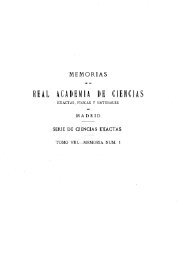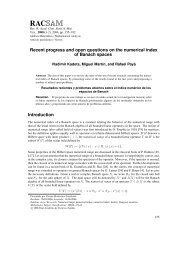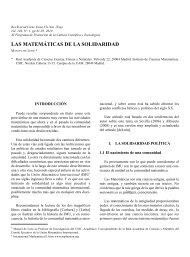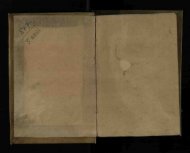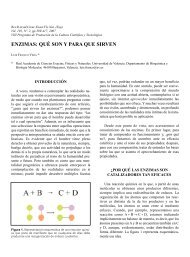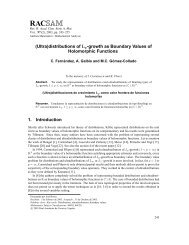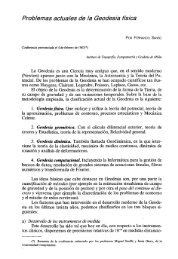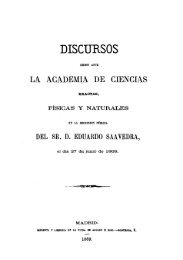The water footprint and virtual water exports of Spanish tomatoes
The water footprint and virtual water exports of Spanish tomatoes
The water footprint and virtual water exports of Spanish tomatoes
- No tags were found...
You also want an ePaper? Increase the reach of your titles
YUMPU automatically turns print PDFs into web optimized ePapers that Google loves.
D. CHICO et al. 15st<strong>and</strong>ards. <strong>The</strong> grey <strong>water</strong> <strong>footprint</strong> is calculated by dividingthe pollutant load (L, in mass/time) by the differencebetween the ambient <strong>water</strong> quality st<strong>and</strong>ard for that pollutant(the maximum acceptable concentration c max, inmass/volume) <strong>and</strong> its natural concentration in the receiving<strong>water</strong> body (c nat, in mass/volume).WFblue ijklET= ×Y10 blue ijklijklE [5]As it is generally the case, the production <strong>of</strong> tomato concernsmore than one form <strong>of</strong> pollution. In our case though,the grey <strong>water</strong> <strong>footprint</strong> was estimated only for Nitrogen. <strong>The</strong>total volume <strong>of</strong> <strong>water</strong> required to assimilate a ton <strong>of</strong> Nitrogenwas calculated considering the surplus Nitrogen, which endsup leaching. <strong>The</strong> natural concentration <strong>of</strong> Nitrogen in the receiving<strong>water</strong> body was assumed negligible whereas the maximumallowable concentration in the ambient <strong>water</strong> systemconsidered was 50 mgNO 3-/l, as the concentration stated inthe EU Nitrates Directive (91/676/EEC). <strong>The</strong> pollutant loadconsidered was the excess Nitrogen based on data from theMinistry <strong>of</strong> the Environment <strong>and</strong> Rural <strong>and</strong> Marine Affairs<strong>of</strong> Spain (MARM, 2008) (Annex IV). This excess Nitrogenavailable for leaching or run-<strong>of</strong>f (kg/ha) was then multipliedby the corresponding area in order to obtain the total load <strong>of</strong>Nitrogen (kg) reaching the surface or ground<strong>water</strong> systems.This was divided by the ambient <strong>water</strong> quality st<strong>and</strong>ard <strong>and</strong>the corresponding crop yield (ton/ha) to obtain the grey <strong>water</strong>content in terms <strong>of</strong> m 3 /ton. Thus, a grey <strong>water</strong> <strong>footprint</strong> wasobtained for each year period <strong>and</strong> type <strong>of</strong> production system.WFgrey ijklExcessNk=LimitN×YijklE [6]



